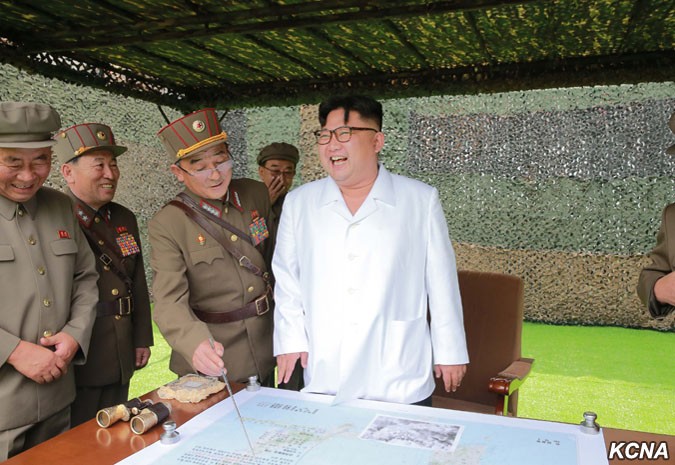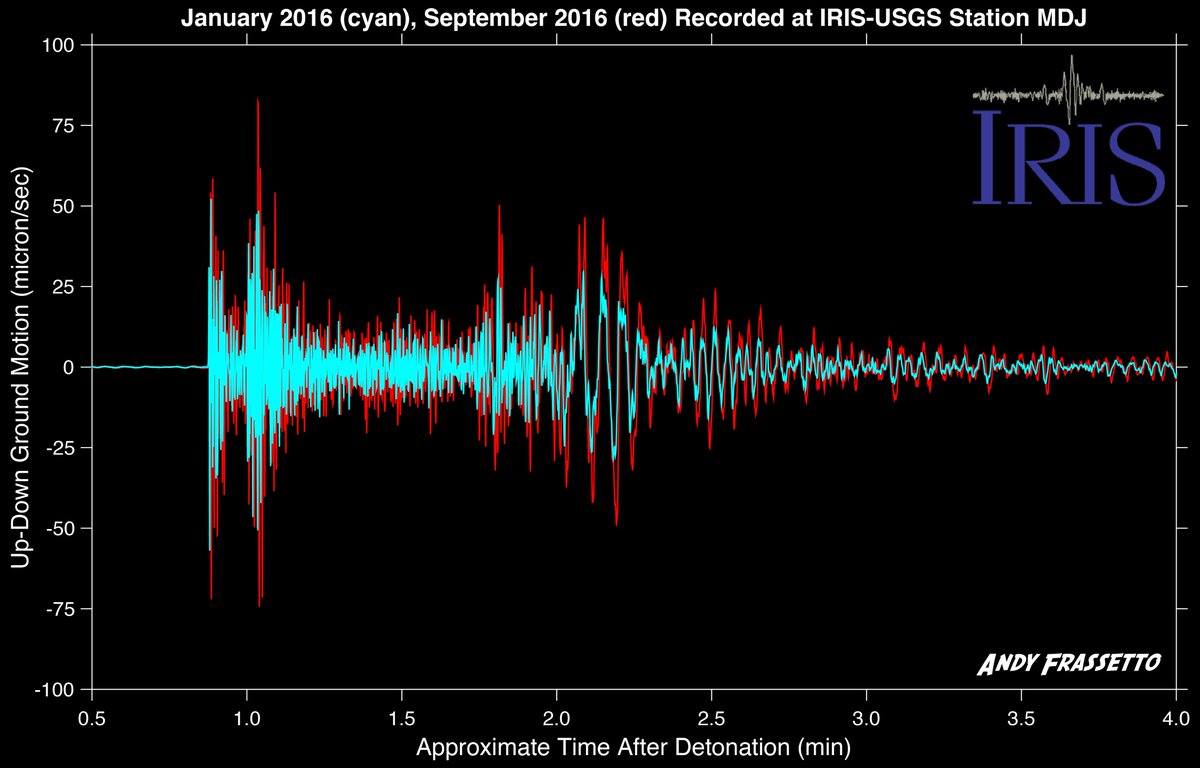Independence Day
In
Login if you are already registered
(no votes) |
(0 votes) |
Research Fellow at the Primakov Institute of World Economy and International Relations under the Russian Academy of Sciences, RIAC expert
North Korea keeps continues to develop and improve its nuclear deterrent forces at a rapid pace. Soon after it tested a submarine-launched solid-fuelled ballistic missile and a new version of its surface-to-surface liquid-fuelled ballistic missile, the North Korea conducted a nuclear test, its fifth overall and the second this year.
Before discussing the September 9, 2016 event, it is worth mentioning the September 5 missile launches – although both may seem less important than the recent successful launch of a submarine-launched ballistic missile (SLBM). On closer scrutiny, the early September events are just as important and interesting. Monday, September 5, saw a salvo launch of three missiles from road-mobile missile complexes to a distance of around 1,000 kilometres. The initial impression was that it was a regular test of the Nodong, a fairly well known medium-range ballistic missile, with the salvo practice being the only thing that was new in Monday’s launches. Yet, after the North Koreans published more detailed photographs of their launches, it became clear that it was a test of a heavily upgraded Scud-class missile harking back to Soviet-made missile complexes.

KCNA
Kim Jong-un monitoring missile launches. 5 September 2016.
North Korea used units sourced from the Middle East in the 1980s to set up serial production of what was initially known as a knock-off code-named the Hwasong-5, followed by the upgraded Hwasong-6 boasting an increased range. And now, apparently, the wraps have been taken off the Hwasong-7,a missilelong anticipated by the expert community (it had been often referred to as the SCUD-ER, Extended Range). Thanks to their somewhat bigger size and separable warheads (a first for the Scud family), the missiles managed to reach the range of 1,000 kilometres – while its Soviet-made predecessor, the R-17 Elbrus, was only capable of a 300 kilometres! Vladimir Khrustalev, a Russian expert on the North Korean missile programme, has noted a similarity between the new North Korean missile’s warheads and those of recent modifications of Iranian missiles, such as the Shahab-3, something that points to continued cooperation between the two countries on missile programme development.
Why are these seemingly purely technical details important from the point of view of the overall situation in the Korean Peninsula? The new missile, capable of reaching the islands of Japan, can be launched from MAZ-543 conventional four-axle road-mobile carriers, of which the North Korea has much more than of the extended five-axle road-mobile carriers needed to launch the Nodong-class missiles. This increases the number of hypothetical salvos that can be fired at targets in Japan markedly, since the number and frequency of launches is limited by the number of carriers rather than by the number of missiles.
Yet the North Korean missile programme would not have caused such concern had it not been for the simultaneous development of the country’s nuclear programme. In early September, Kim Jong-un stressed the need for the continued strengthening of the country’s nuclear forces. But the extent to which the leader meant business came as a surprise, as North Korea conducted a nuclear test, its fifth overall and the second this year (the first time that the interval between tests was so short), on its Independence Day.[1] The explosion was more powerful than any of the previous ones: around 10 kilotons according to the traditionally more conservative South Korean estimates, or between 20 and 30 kilotons according to U.S. experts.[2] Morever, the North Koreans claimed that this time around, they had tested not just a nuclear device, but a warhead ready to be mounted on a missile. Of course, this claim cannot possibly be verified, but given North Korea’s obvious progress in other areas, even sceptics will now have to admit that North Korea has become a full-fledged nuclear power.

IRIS
Seismographic records comparison during missile launches, 6 January (blue) and 9 September (red)
While it is quite difficult to predict the implications of these developments, we can certainly expect the arms race to intensify (the equipment of new South Korean destroyers with missile defence systems seems to be a done deal). The deployment of not one but two THAAD batteries in the south of the Korean peninsula next year cannot be ruled out either. Since the North Korean tests will definitely be used to justify the presence of the United States in the region, China’s response remains to be seen – it is the only country that has “forgiven” North Korea for its January tests and has started undermining the sanctions regime. It is quite possible that this step by Kim Jong-un could prove reckless: he probably could have waited longer before doing something that has traditionally kicked the simmering Korean crisis into overdrive. That said, the “young marshal”, who had been widely expected to preside over a collapse of the state founded by his grandfather, seems to be demonstrating that he knows what he is doing. He could still turn the situation to his advantage this time around too.
One thing is clear though: the times in the peninsula are becoming increasingly more interesting, and not in a good sense.
1 September 9 is alternately called Independence Day or Proclamation Day (Day of the Foundation of the Republic). While the second designation is formally more accurate, it is used more rarely.
2 Since external observers mainly assess seismic jolts without any knowledge of ground properties, device placement depth or any other factors, they can only confidently speak of an increase or a decrease in power relative to their past assessments. For instance, South Korea rated the January explosion at just 6 kilotons, and then simply prorated this figure to arrive at the current estimate.
(no votes) |
(0 votes) |




